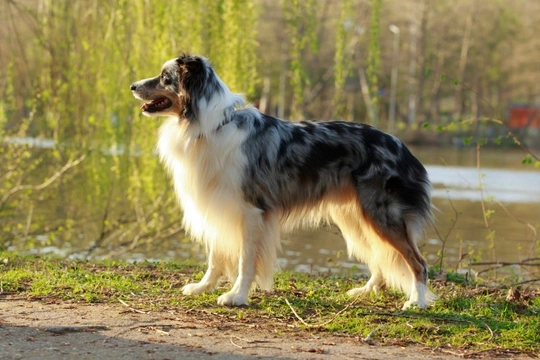
Collie Eye Anomaly/Choroidal Hypoplasia (CEA/CH) testing for dogs
Collie eye anomaly (also known by its scientific name of choroidal hypoplasia) is a hereditary eye condition that commonly affects collie-type dogs, as well as a couple of other breeds too. It can potentially lead to total blindness in some dogs affected by the condition. It cannot be treated or cured, and it is passed on from parent dogs to their offspring by means of autosomal recessive heredity.
Because the disease is prevalent in the breed lines of certain pedigree dogs, The Kennel Club in association with the British Veterinary Association run a health scheme to test potential breeding stock from affected breeds for the markers of the condition, so that would-be breeders can make an informed decision about whether or not to breed from their dogs.
In this article, we will look at collie eye anomaly in more detail, including what sort of dogs can be affected by it, how the heredity of the condition works, and how to get your dog tested.
More about collie eye anomaly/choroidal hypoplasia
Choroidal hypoplasia is more widely known as collie eye anomaly, because it is almost unique to dogs with collie in their breed lines. The condition affects the eye’s choroid, which is a layer of tissue beneath the retina. In dogs affected by the condition, it is usually apparent from a relatively young age, as unlike many other eye conditions, the choroid develops abnormally from the start, rather than becoming damaged or dysfunctional later on.
Exactly how badly the condition will affect any given dog can be highly variable, and even dogs from within the same litter may not be affected in the same way and to the same extent.
Often, dogs will be only mildly affected by the condition, and largely keep their normal vision-however, in more serious variants of the condition, collie eye anomaly can lead to a range of different problems and even ultimately total blindness.
What sort of dogs can be affected by the condition?
As the name implies, collie eye anomaly is a condition that usually (but not exclusively) affects collies, and the breeds that are known to have incidences of it within their breed lines are the Scotch collie, Shetland sheepdog, Australian shepherd, Border collie, Lancashire heeler, and the Nova Scotia duck tolling retriever.
Generally, the condition becomes apparent from a young age, but because the condition can be mild, it may not always be apparent to the dog’s owners. Males and females are equally likely to be affected, and it is rare for the condition to present for the first time in older dogs.
How does the heredity of collie eye anomaly work?
Collie eye anomaly is an autosomal recessive condition, which means that just because a dog inherits one copy of the faulty gene that leads to the condition, they will not automatically be affected by the condition themselves. In order for a dog to be affected with the condition, they must inherit two copies of the faulty gene, one from each parent dog. If both parent dogs are clear of the condition, it cannot be passed on.
However, just because a dog is not exhibiting any signs of the condition themselves does not necessarily mean that they are clear of the condition-they may still be a carrier for it, which means that if they are bred with another dog that is a carrier or affected with the condition themselves, their litter will be at risk of some of the puppies developing the condition and some becoming carriers for it.
Getting your dog tested for the condition
Testing for collie eye anomaly is important for the owners of the breeds of dog that can be affected by it, so that an informed decision can be made about whether or not it is viable to use them for breeding. Generally, advice for hereditary health conditions and testing is that dogs shown to be affected by or a carrier for the condition in question should not be allowed to breed.
However, because such a large number of certain affected breed’s dogs are carriers for the condition, removing all of these dogs from the potential breeding gene pool may be counter-productive, as narrowing the range of genetic diversity in this way is apt to lead to the development of further hereditary health defects as a result.
That said, a dog that is suffering with even a very mild form of collie eye anomaly themselves can still pass on a more severe form of the condition to their offspring, and so it is not a given that just because a potential breeding dog is themselves not badly affected, nor will their litter be.
In order to test for collie eye anomaly, a DNA test from the dog in question needs to be sent off for laboratory assessment, which requires a small blood sample to be taken from the dog by your vet, and then sent off to an authorised laboratory. For a list of laboratories that can carry out the test, please see the information section on The Kennel Club’s website.



